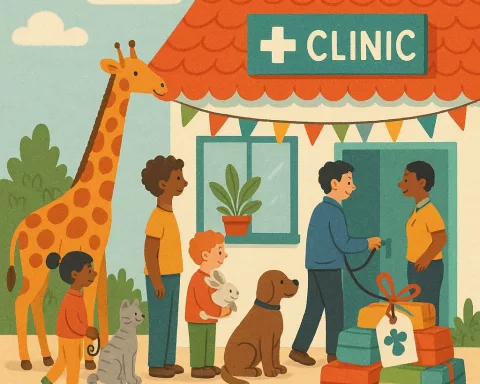The stroke crisis affects millions of people globally each year, with over 12 million experiencing their first stroke annually. The Heart and Stroke Foundation SA leads World Stroke Week and World Stroke Day to raise awareness, encourage prevention, and enhance medical care. Individuals can reduce their risk by adopting healthy habits, recognizing stroke symptoms through the FAST acronym, and controlling critical risk factors. Through advocacy, policy changes, and collaboration, we can combat this silent health crisis and ensure a healthier future for all.
What is the stroke crisis and how can it be combatted?
The stroke crisis is a global issue affecting millions of people annually, with over 12 million experiencing their first stroke each year. The World Stroke Foundation raises awareness through campaigns like World Stroke Week and World Stroke Day, promoting prevention and post-stroke care. Individuals can reduce their risk by adopting healthy habits like exercise, a balanced diet, and managing stress. Early detection of stroke symptoms is also crucial, with the FAST acronym (Face, Arms, Speech, Time) being an essential tool for recognizing stroke indicators.
Tackling the Global Stroke Crisis
In a time where medical breakthroughs are celebrated for their potential to fight various health problems, the worldwide stroke crisis persistently poses a significant challenge. Millions of lives are affected by this devastating event each year, and the Heart and Stroke Foundation SA leads World Stroke Week and World Stroke Day 2023 to raise awareness, encourage prevention, and enhance medical care for those impacted by stroke.
Being a primary cause of brain damage, disability, and even death, stroke happens when the blood flow to a part of the brain is disrupted, or when a blood vessel ruptures. The World Health Organisation reveals that a shocking 15 million stroke cases take place annually, with over 12 million people experiencing their first stroke this year alone. Sadly, 6.5 million individuals will lose their lives to the effects of stroke, while the lifetime prevalence surpasses 110 million people across the globe.
The consequences of stroke surpass age limitations, with more than 60% of cases occurring in people below 70 and 16% affecting those under 50. This health crisis is categorized as a non-communicable disease (NCD), which is responsible for over 60% of worldwide deaths, primarily in low and middle-income nations. By 2030, NCDs are predicted to overtake all other causes of death in Africa.
Raising Stroke Awareness and Prevention
In response to this concerning trend, the Heart and Stroke Foundation SA actively participates in World Stroke Week (WSW) and observes World Stroke Day (WSD) on October 29th. This annual health campaign educates and informs the public about stroke symptoms and risk factors, ultimately aiming to decrease the occurrence of strokes and save lives. This year’s theme, “Together we are #GreaterThanStroke,” emphasizes the significance of post-stroke care, rehabilitation, and support networks among friends, communities, and families.
To effectively recognize stroke symptoms, individuals must remember the acronym FAST (Face, Arms, Speech, Time). This essential mnemonic not only allows for quick detection of stroke indicators but also promotes prompt action and emergency response.
Reducing Stroke Risk Through Lifestyle Choices
Addressing critical risk factors is crucial in reducing the prevalence and incidence of strokes and other cerebrovascular diseases. While some factors like age, sex, and family history are beyond our control, others can be managed through proactive health-seeking behaviors. Embracing healthy habits, such as a balanced diet, regular exercise, refraining from smoking, managing stress effectively, controlling chronic illnesses, and maintaining a healthy weight, can prevent up to 70% of strokes. Additionally, these lifestyle choices considerably decrease the risk of recurring strokes for survivors.
The Heart and Stroke Foundation SA is dedicated to promoting cardiovascular and cerebrovascular health through various initiatives. Health promotion activities, health risk assessments, information tables, and health talks form the foundation of their outreach. Their Heart Mark (HM) endorsement program enables consumers to identify heart-healthy foods, while the FAST heroes campaign engages children’s enthusiasm for learning to raise stroke symptom awareness.
Advocating for Policy Changes and Stronger Collaboration
Alongside these initiatives, the foundation advocates for policies such as the Sugar Sweetened Beverage Tax, Tobacco Sin Tax, and salt legislation to minimize the risk of heart and stroke diseases. These efforts reflect the combined commitment to confront the stroke crisis directly.
As the world unites under the motto “Together we are #GreaterThanStroke,” it is vital to acknowledge the importance of prevention and collaboration. By fostering awareness, promoting healthy habits, and providing essential support, we can address this silent health crisis and guarantee a brighter future for millions worldwide.
1. What is the stroke crisis?
The stroke crisis is a global issue affecting millions of people annually, with over 12 million experiencing their first stroke each year. Stroke happens when the blood flow to a part of the brain is disrupted or when a blood vessel ruptures.
2. How can stroke be combatted?
Stroke can be combatted through advocacy, policy changes, and collaboration. Individuals can also reduce their risk by adopting healthy habits like exercise, a balanced diet, and managing stress. Early detection of stroke symptoms is also crucial, with the FAST acronym being an essential tool for recognizing stroke indicators.
3. What is the FAST acronym?
The FAST acronym (Face, Arms, Speech, Time) is a tool for recognizing stroke symptoms. It helps individuals in early detection of stroke indicators, promotes prompt action, and emergency response.
4. What are critical risk factors for stroke?
Critical risk factors for stroke include age, sex, family history, high blood pressure, smoking, diabetes, and obesity.
5. Can stroke be prevented?
Up to 70% of strokes can be prevented through the adoption of healthy habits, such as a balanced diet, regular exercise, refraining from smoking, managing stress effectively, controlling chronic illnesses, and maintaining a healthy weight.
6. What initiatives does the Heart and Stroke Foundation SA have in place?
The Heart and Stroke Foundation SA has various initiatives in place, such as health promotion activities, health risk assessments, information tables, and health talks. Their Heart Mark (HM) endorsement program enables consumers to identify heart-healthy foods, while the FAST heroes campaign engages children’s enthusiasm for learning to raise stroke symptom awareness.
7. What policies does the Heart and Stroke Foundation SA advocate for?
The Heart and Stroke Foundation SA advocates for policies such as the Sugar Sweetened Beverage Tax, Tobacco Sin Tax, and salt legislation to minimize the risk of heart and stroke diseases.
8. What is the theme of World Stroke Week and World Stroke Day this year?
The theme of World Stroke Week and World Stroke Day this year is “Together we are #GreaterThanStroke”. The campaign emphasizes the significance of post-stroke care, rehabilitation, and support networks among friends, communities, and families.








